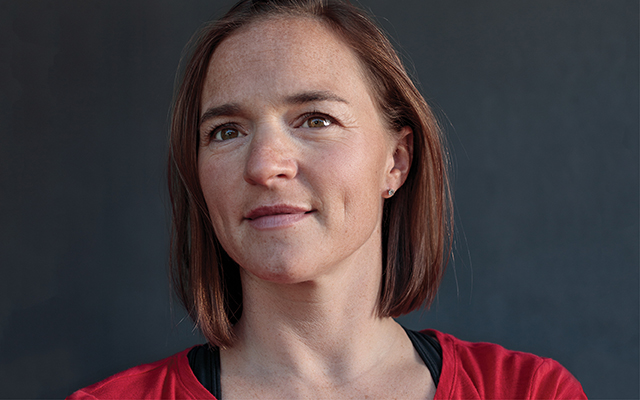Winning eight Olympic gold medals requires lots of squats, countless high-intensity intervals, and an average of 18 hours of training every week — but most of it at a surprisingly low intensity level.
Meet Norwegian cross-country skier Marit Bjørgen. At 38 she’s the most decorated winter Olympian of all time. She recently shared 17 years’ worth of training records — for 8,105 sessions — with researchers from two Norwegian universities and the Norwegian Olympic Federation. Their analysis, published in Frontiers in Physiology, provides insights for all athletes.
Bjørgen began recording workouts in 2000 when she was 20 years old. Her initial training included a high proportion of brief, intense intervals that often pushed her heart rate over 90 percent of her max. Soon, however, her results plateaued.
So, in her mid-20s, Bjørgen reversed her regimen. She increased her exercise volume and lowered its intensity to boost her cardiovascular foundation and endurance.
By the time she was in her 30s, she was often training two to three hours at a time; her annual volume increased by 80 percent, from 522 hours at age 20 to 940 at age 35. These new workouts were primarily performed at a light intensity, with Bjørgen’s heart rate hovering at 67 to 75 percent of her max.
She also amped up strength training, with a larger focus on her core.
Bjørgen’s efforts paid off: She began to win — everything. She currently holds more than 115 World Cup victories and 15 Olympic medals.
Her training offers lessons for the rest of us, says study project leader Øyvind Sandbakk, PhD, professor and managing director of the Centre for Elite Sports Research at the Norwegian University of Science and Technology:
- Build a strong athletic foundation with light-intensity endurance training. Bjørgen logged 93 percent of her time doing easier workouts and just 5 percent — about twice a week — performing intense intervals.
- Add volume to your training regimen, but not all at once. “The volume should be progressively built up in order to tolerate and respond positively to these increased loads,” Sandbakk says.
- Boost your training in the weeks prior to a big event — a process known as periodization — to arrive at your performance peak.
- Change up your routine if you start to feel stagnant.
- Prioritize rest and recovery. “Bjørgen has no specific recovery routines other than doing the basics very, very well,” Sandbakk says. “This means proper warm-up, cool-down after sessions, [good] nutrition, enough high-quality sleep, and resting days when needed. She is likely good at ‘turning off’ when she is recovering.”
This originally appeared as “Train Like an Olympian” in the September 2018 print issue of Experience Life.




This Post Has 0 Comments